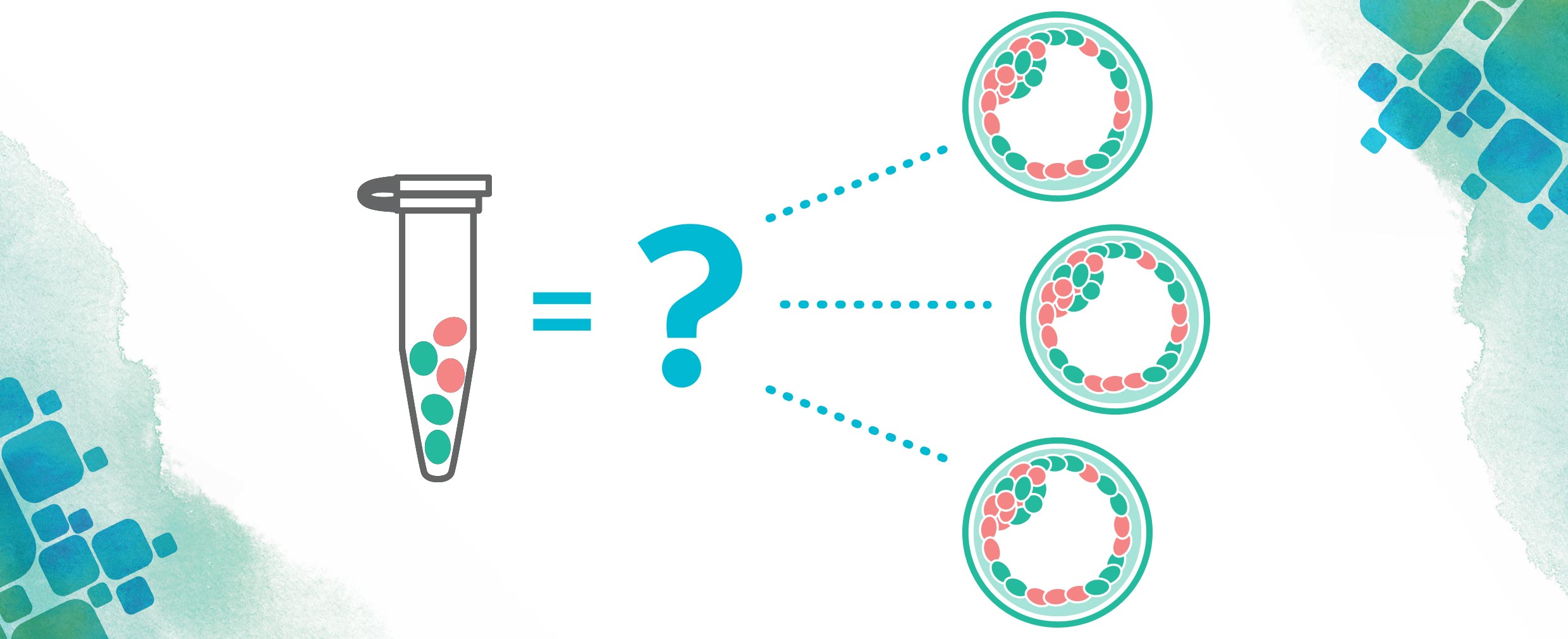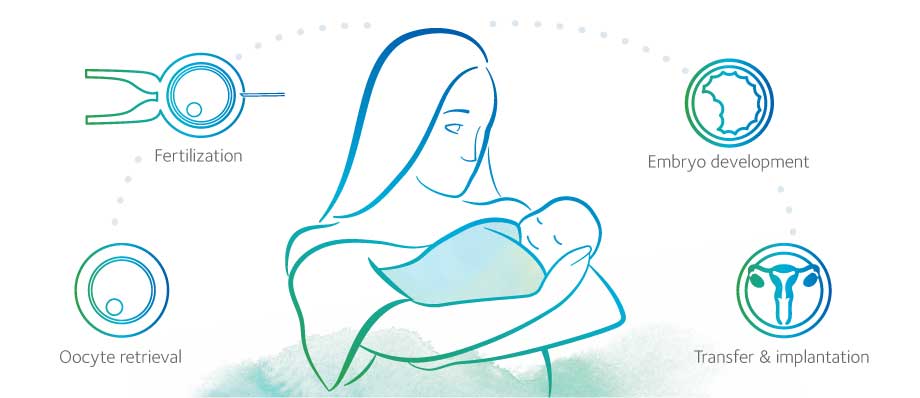In this day and age, it goes without saying that the field of genetics (especially within the fertility world) is constantly changing. In the early years of preimplantation genetic testing (PGT), patients could decide whether they wanted to screen just three specific chromosomes via FISH, or all 24 chromosomes via aCGH. Suffice it to say, times have changed, and while it is now commonplace for every PGT-A test to screen all 24 human chromosomes (1-22, X and Y), the similarities stop there.
All PGT-A is designed to detect aneuploidy, or whole chromosomes that are extra or missing in an embryo. We know that aneuploidy in an embryo may cause that embryo to fail to implant, result in a pregnancy that miscarries or, lead to the birth of a child with a disability (such as an extra copy of chromosome 21 causing Down’s Syndrome). However, PGT-A can also give you other information on your embryo’s genetic health.
So what should you keep in mind while you search for the best PGT-A test for your family? Below, we’ve compiled questions you might wish to ask your PGT-A provider to learn about what their specific test may look for.
What platform is being used?
While all PGT-A tests give aneuploidy information, the technology used to obtain that information, known as the testing platform, varies by laboratory. Many PGT-A platforms involve next generation sequencing (NGS), where small segments of DNA along each chromosome are copied (sequenced) and quantified to assess overall chromosome content. Other platforms assess normal genetic variations, called single nucleotide polymorphisms (SNPs), along the chromosome to determine chromosome content. CooperSurgical’s PGTaiSM technology platform incorporates NGS and SNPs to draw on the benefits of both techniques.
Can the test detect polyploidy?
Polyploidy, or whole sets of chromosomes extra or missing, is expected to lead to adverse pregnancy outcomes (typically pregnancy loss). However, because many PGT-A tests function in part by looking at the ratios of chromosome to chromosome, when there are equal numbers of each chromosome (e.g. three copies of each chromosome instead of the normal two copies), the ratio looks normal and polyploidy can be missed. Not all PGT-A screens for polyploidy; you may wish to ask your PGT provider if their PGT-A test detects polyploidy.
Can the test detect segmental aneuploidy?
Segmental aneuploidy is a form of aneuploidy where only pieces of a chromosome are extra or missing, rather than the whole chromosome. Like full aneuploidy, segmental aneuploidy can often cause implantation failure or pregnancy loss. However, because the dosage imbalance of a missing or extra piece of chromosome is less severe than a whole extra or missing chromosome, segmental aneuploidies may have a higher chance or resulting in a child born with physical or intellectual disabilities. It is also important to understand the resolution of the test, in other words how small a fragment of a chromosome the test can detect. As a general rule, the smaller the fragment extra or missing, the greater the chance of live birth with disability. While no test can detect everything in an embryo, some tests have a higher resolution than others and, therefore, can detect smaller segmental aneuploidies.
Does the test detect mosaicism? How is it reported?
Mosaicism, or the presence of a mixture of chromosomally normal and abnormal cells, has been a hot topic in PGT for the last few years, and the genetic counselors at CooperSurgical spend a lot of time speaking with patients about mosaic results. Literature indicates that embryos identified as mosaic implant less and miscarry more compared to chromosomally normal (euploid) embryos, but some result in successful pregnancies. Patients will often have different perspectives regarding transfer of mosaic embryos, so it is important to understand if your PGT-A test will detect mosaicism, at what ranges mosaicism will be reported, and if the report will give you any additional information about the mosaicism detected (for example: was the chromosome abnormality seen in the majority or minority of cells tested?).
Is there anything else this testing will tell me?
The most common request we get from patients is “I would like the PGT test that looks for everything.”
While there isn’t a test that can detect everything, some tests give more information than others. Some PGT-A tests, for example, provide parent of origin of aneuploidy, or whether the chromosome abnormality detected came from the sperm or the egg. While this doesn’t change the suitability of an embryo for transfer, it can provide important information for patients planning additional IVF and PGT cycles, especially those using or considering using donors. Some PGT-A tests may be able to tell you if there is a chance that you or your partner carries a chromosome rearrangement, such as translocation. Some can identify situations where cells deriving from a source other than the embryo are introduced into the sample (contamination), compromising the results. Ask your doctor what other information you may learn from your PGT-A results and think about how you may use that to inform transfer decisions or plans for future cycles.
How is the PGT-A data analyzed?
Gone are the days of PGT results being collected by a scientist hunched over a microscope, counting fluorescent signals. Today, most aspects of PGT are automated, performed by highly specialized machines. However, a human element is always required, which introduces the chance of human error. Some PGT-A tests are analyzed by laboratory staff, drawing on their training to interpret data to distinguish “normal” from “abnormal” results. Others, such as the PGTaiSM platform, use machine learning to interpret PGT-A results, drawing on pregnancy outcome data, which introduces a more objective interpretation of results and reduces the chance of human error. How will your PGT-A results be generated and what is the quoted accuracy of those results are important questions to have answered.
What kind of support is available from the testing laboratory if I have questions?
Regardless of the answers to any of the questions above, the bottom line is that PGT-A testing and results typically go way beyond the typical Biology 101 syllabus and you shouldn’t feel like you need to process and understand all of this information on your own. Many laboratories have a genetic counselor or team of genetic counselors who are specially trained to help patients understand the ins and outs of PGT so they can make the best decision for their families. Give yours a call today!
Sources:
1. Munné et al. Detailed investigation into the cytogenic consititution and pregnancy outcome of replacing mosaic blastocysts detected with the use of high-resolution nextgeneration sequencing. Fertil Steril (2017).
2. Munne & Wells. Detection of mosaicism at blastocyst stage with the use of high-resolution next-generation sequencing. Fertil Steril (2017).
3. Fragouli et al. The developmental potential of mosaic embryos. Fertil Steril (2015).
4. Fragouli et al. Analysis of implantation and ongoing pregnancy rates following the transfer of mosaic diploidaneuploid blastocysts. Hum Genet (2017).
5. Greco et al. Healthy babies after intrauterine transfer of mosaic aneuploid blastocysts. N Engl J Med (2015).
This piece was written for CooperSurgical by board-certified genetic counselor Erin Armenti.






